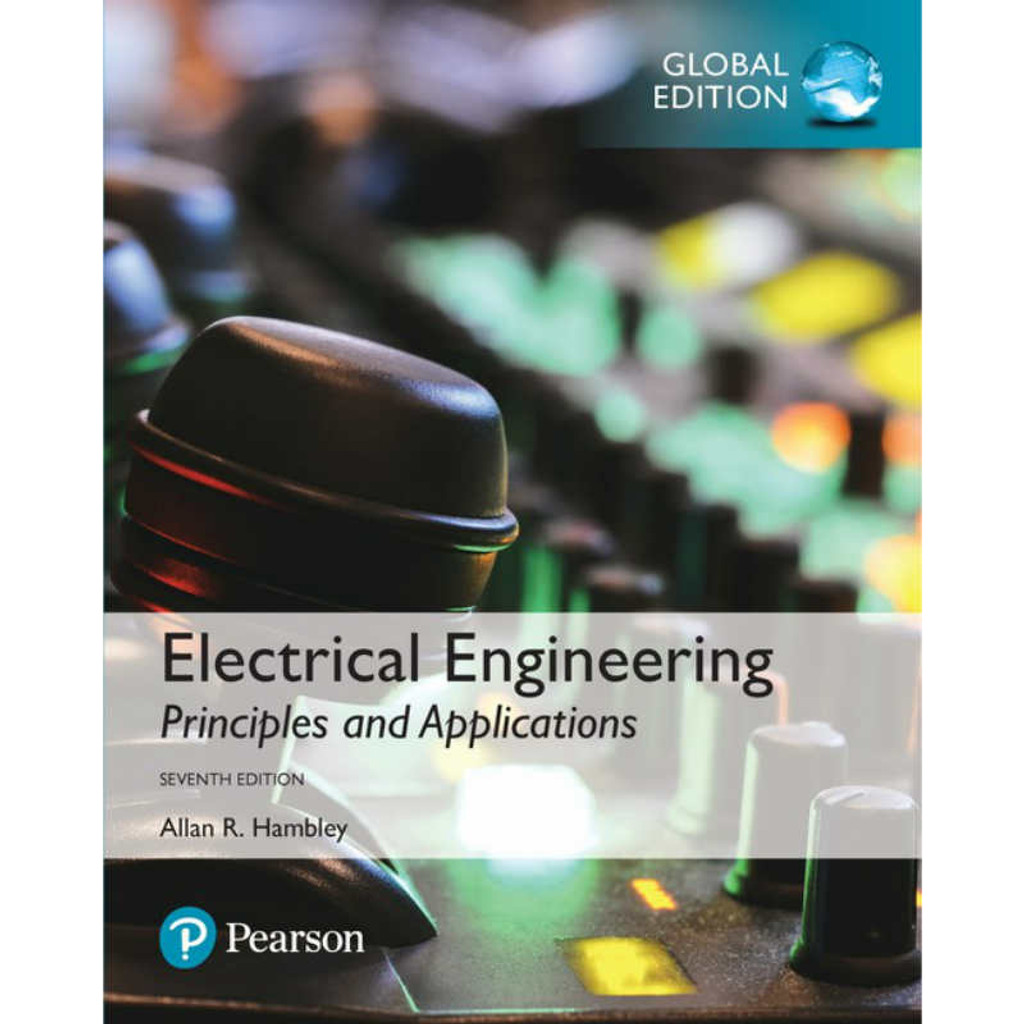Introducing the Electrical Engineering Principles and Applications 7th Edition Solutions PDF, a comprehensive guide designed to empower students and professionals alike in their pursuit of electrical engineering mastery. This meticulously crafted resource provides unparalleled access to in-depth solutions, practice problems, and expert insights, ensuring a thorough understanding of the fundamental concepts and practical applications that shape this dynamic field.
Delving into the intricacies of circuit analysis, semiconductor devices, power systems, control systems, digital signal processing, and electromagnetic theory, this solutions manual serves as an invaluable companion, guiding readers through complex topics with clarity and precision. Whether you’re a student seeking academic excellence or an engineer seeking to expand your knowledge base, this resource is an indispensable tool for success.
1. Electrical Engineering Principles and Applications 7th Edition Overview

The 7th edition of Electrical Engineering Principles and Applications is a comprehensive textbook that provides a thorough grounding in the fundamentals of electrical engineering. It is written in a clear and concise style, and it includes numerous examples and practice problems to help students master the material.
The book is divided into eight parts, each of which covers a different aspect of electrical engineering. Part 1 introduces the basic concepts of electricity and magnetism. Part 2 covers circuit analysis and network theorems. Part 3 discusses semiconductor devices and applications.
Part 4 covers power systems and machines. Part 5 covers control systems and applications. Part 6 covers digital signal processing and applications. Part 7 covers electromagnetic theory and applications. And Part 8 provides a solutions manual and practice problems.
The 7th edition of Electrical Engineering Principles and Applications is a valuable resource for students and practicing engineers alike. It is a comprehensive and up-to-date textbook that provides a solid foundation in the fundamentals of electrical engineering.
The target audience for this book is undergraduate students in electrical engineering. The prerequisites for using this book are a basic understanding of calculus and physics.
2. Circuit Analysis and Network Theorems
Circuit analysis is the process of determining the currents and voltages in a circuit. Network theorems are a set of rules that can be used to simplify the analysis of complex circuits.
Some of the most common circuit analysis methods include:
- Ohm’s law
- Kirchhoff’s current law
- Kirchhoff’s voltage law
- Thevenin’s theorem
- Norton’s theorem
- Superposition theorem
- Maximum power transfer theorem
These methods can be used to analyze a wide variety of circuits, from simple series and parallel circuits to complex networks.
Network theorems are a set of rules that can be used to simplify the analysis of complex circuits. Some of the most common network theorems include:
- Thevenin’s theorem
- Norton’s theorem
- Superposition theorem
- Maximum power transfer theorem
These theorems can be used to reduce a complex circuit to a simpler equivalent circuit, which can then be analyzed using the methods described above.
Circuit analysis and network theorems are essential tools for electrical engineers. They can be used to design, analyze, and troubleshoot a wide variety of electrical circuits.
| Theorem | Equivalent Circuit | Applications |
|---|---|---|
| Thevenin’s theorem | A voltage source in series with a resistor | Finding the voltage or current at any point in a circuit |
| Norton’s theorem | A current source in parallel with a resistor | Finding the current or voltage at any point in a circuit |
| Superposition theorem | A set of circuits, each of which is analyzed separately | Finding the voltage or current at any point in a circuit that contains multiple sources |
| Maximum power transfer theorem | A load resistance that is equal to the source resistance | Transferring the maximum amount of power from a source to a load |
3. Semiconductor Devices and Applications
Semiconductor devices are the building blocks of modern electronics. They are used in a wide variety of applications, from computers and cell phones to cars and airplanes.
The most common type of semiconductor device is the transistor. Transistors are used to amplify signals, switch currents, and store information. Other types of semiconductor devices include diodes, which are used to rectify AC current, and thyristors, which are used to control power flow.
The fundamental principles of semiconductor devices are based on the properties of semiconductors. Semiconductors are materials that have a conductivity that is between that of conductors and insulators. This property makes them ideal for use in electronic devices.
The following table summarizes the characteristics of different semiconductor devices:
| Device | Symbol | Function |
|---|---|---|
| Diode | D | Rectifies AC current |
| Transistor | Q | Amplifies signals, switches currents, stores information |
| Thyristor | T | Controls power flow |
Semiconductor devices are essential components of modern electronics. They are used in a wide variety of applications, from computers and cell phones to cars and airplanes.
FAQ Summary: Electrical Engineering Principles And Applications 7th Edition Solutions Pdf
What are the key features of the Electrical Engineering Principles and Applications 7th Edition Solutions PDF?
The Electrical Engineering Principles and Applications 7th Edition Solutions PDF offers a wealth of features, including in-depth solutions to practice problems, comprehensive explanations of complex concepts, and expert insights from leading electrical engineering professionals.
How can this resource benefit students?
This resource is invaluable for students seeking academic excellence in electrical engineering. It provides a deeper understanding of the subject matter, enhances problem-solving skills, and prepares students for success in their coursework and future careers.
Is this solutions manual suitable for professionals as well?
Absolutely. The Electrical Engineering Principles and Applications 7th Edition Solutions PDF is an excellent resource for professionals seeking to expand their knowledge base, stay abreast of the latest advancements in the field, and enhance their problem-solving abilities.